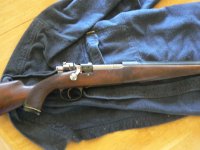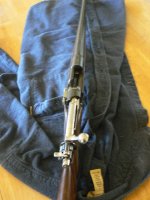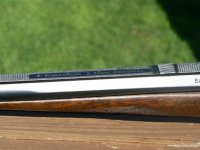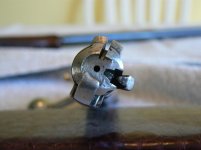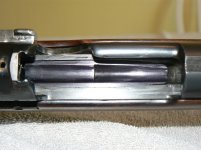This old gun was my grandfather's. I don't know where he bought it, but it's a decent shooter and I really like the wood on it. On the top of the barrel it says H. Burgsmuller & Sohne, Kreiensen. On one side of the barrel it says 5.6 x 35, and on the opposite side, in the exact same location, it says .22; there is a serial number (12837) on the barrel. There is another number on the bolt (4825) that I'm assuming is another serial number. This firearm is currently in .222 Remington, but that was my grandfather's doing. I believe the gun was originally chambered in 5.6 x 35, but I can't find anything on that caliber whatsoever, anywhere.
I have attatched pictures. If anyone has any information on this rifle, I will be very thankful. Also...this rifle is currently drilled and tapped for scope mounts, I'm assuming by my grandfather, but not sure. It also had an iron sight mount on the side, or at least something I thought looked like one. It is drilled for that as well. So, having mentioned that, what would be the best way to attatch modern iron sights to this rifle? Can I use the drilled holes or whatever? I already have a front sight on the rifle from the previous owner, attatched via dovetail, so I don't need to worry about that.
Any help will be appreciated very much.
I have attatched pictures. If anyone has any information on this rifle, I will be very thankful. Also...this rifle is currently drilled and tapped for scope mounts, I'm assuming by my grandfather, but not sure. It also had an iron sight mount on the side, or at least something I thought looked like one. It is drilled for that as well. So, having mentioned that, what would be the best way to attatch modern iron sights to this rifle? Can I use the drilled holes or whatever? I already have a front sight on the rifle from the previous owner, attatched via dovetail, so I don't need to worry about that.
Any help will be appreciated very much.

